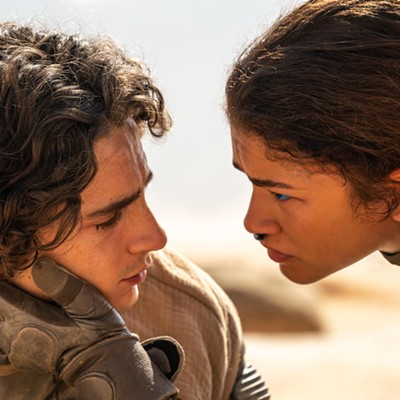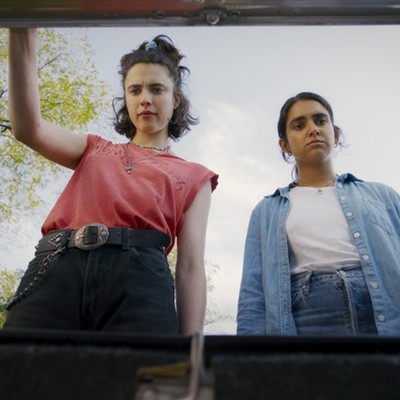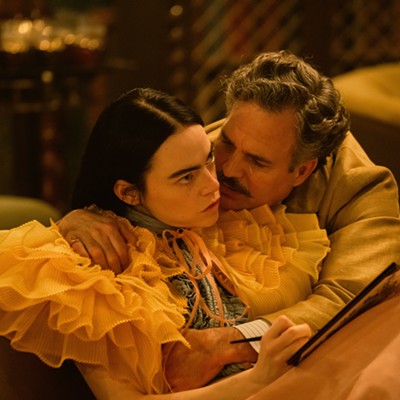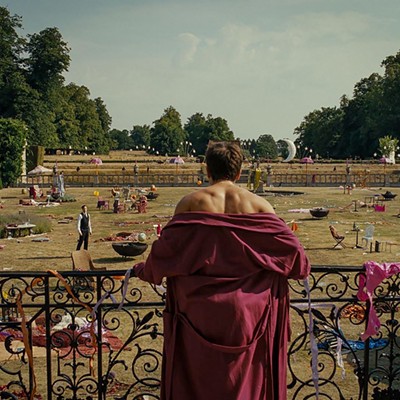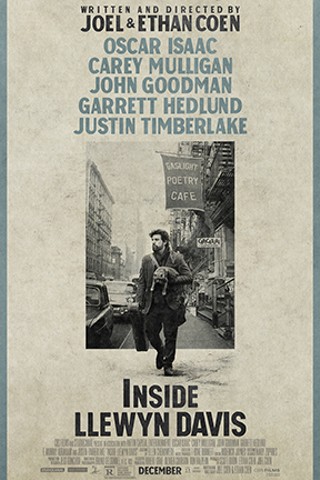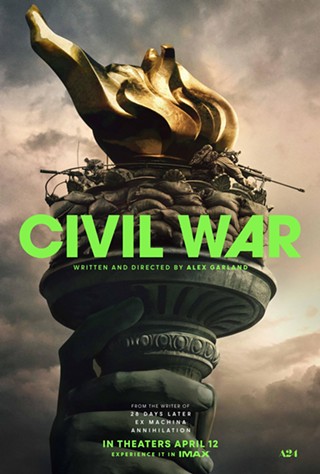The 1961 Greenwich Village folk music scene is the rich setting for the latest Coen brothers triumph, the brilliant Inside Llewyn Davis. Featuring a knockout performance from Oscar Isaac as the title character, and the usual top-notch writing and directing from brothers Joel and Ethan, it's easily one of the year's best films.
The movie, loosely based on the life of late folk singer Dave Van Ronk, opens with a profile shot of Llewyn singing his heart out on the traditional track, "Hang Me, Oh Hang Me." (Isaac does all of his own singing and guitar playing, and he does it well.) Shortly after completing his performance, his ass gets royally kicked behind the Gaslight Cafe, and the saga has begun.
Slightly sour, brooding and acerbic, the talented Llewyn is going through some hard times. He's lost his singing partner, his new solo album isn't catching on and he doesn't have a place to live. He surfs couches, one of them belonging to the married Jean (Carey Mulligan), who might be carrying his baby.
Llewyn tries to relax at times, perhaps even attempts to smile and enjoy life. That's not going to work for him, at least not in the timespan this movie covers. If he stops to happily address a cat, it escapes out a window. If he tries to lovingly play a tune for his aging father, the dude craps his pants. The universe seems to be requiring Llewyn to remain steadfast through the snarky retorts.
Through all his misery, Llewyn tries to make it as a musician. He performs studio duties on a novelty track called "Please Mr. Kennedy" with Jim (Justin Timberlake) and Al Cody (Adam Driver), eschewing royalties for a quick session paycheck. The performance of this song, with Driver employing some strange "Big Bopper" like vocal styling, is a total hoot.
On a whim, Llewyn travels to Chicago and forces an audition with the infamous agent, Bud Grossman (F. Murray Abraham). The Bud Grossman audition scene is the total antithesis of the joyous and funny "Please Mr. Kennedy" sequence. Let's just say it's a terribly honest nod to the music industry.
The cross-country trek allows for some quality time with Garret Hedlund's stoic, cigarette hoarding driver, and John Goodman's pretentiously cruel jazz musician. Goodman, who has a nice Coen pedigree, is a hilarious mess as Roland Turner, a blathering back-seat passenger with an opinion about everything and nefarious bathroom secrets. His presence is priceless.
Seeing Isaac and Mulligan together reminds of their previous work together in Drive (Isaac played Mulligan's troubled husband). They are total magic on screen, with Mulligan showing an impressive aptitude for justifiable rage. She's very funny, and just a little scary.
Joining Llewyn on most of his journeys are numerous orange tabby cats that do felines proud. Their presence equates to one of those great, eccentric Coen touches. A sequence where a Llewyn friend screams about a cat's gender is quite memorable, and beautifully strange. Llewyn's moment closing a car door on that same cat will break your heart. I'm allergic to cats, but I want an orange one after seeing this movie.
The music is produced by T Bone Burnett, who also worked with the Coens on O Brother, Where Art Thou? In casting musically talented performers like Isaac, Timberlake, and Stark Sands as a folk-singing soldier, the Coens have given their film an authenticity that couldn't be achieved with lip-synching (although, it must be said that George Clooney did some badass lip-synching in O Brother).
Isaac, who has some musical background, smokes his musical moments. He totally inhabits the character in a way that leaves you thinking he's been a folk singer most of his adult life, but such is not the case. He knew how to play and sing a bit, but folk wasn't his forte. Mentor Burnett managed to whip him into fine folk shape.
Hard-core Coen brother fans fretting the absence of usual cinematographer Roger Deakins (he was unavailable for this film due to his Skyfall involvement) can relax. Bruno Delbonnel (Amelie) is a more than sufficient stand-in. The movie is shot in pleasant, washed-out colors, giving it the appearance of an old, favorite album cover gently fading. Every shot looks beautiful.
Inside Llewyn Davis is an authentic look at the pre-Dylan folk music scene, and it gets high marks for its dedication to the music. It sounds great across the board.
It's also an uncompromisingly honest character study of a disagreeable sort with a wounded soul. It's going to take a while for Llewyn to be happy. He has some serious shit to sort out before he starts cracking smiles and slapping backs before and after gigs down at the Gaslight.

